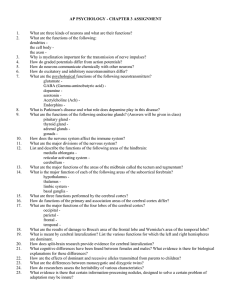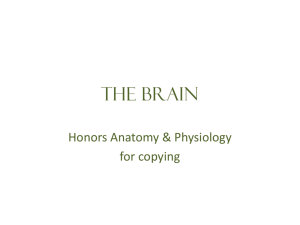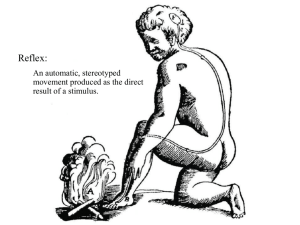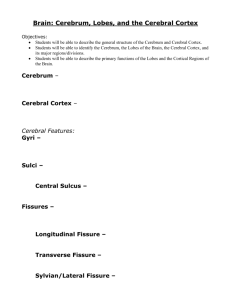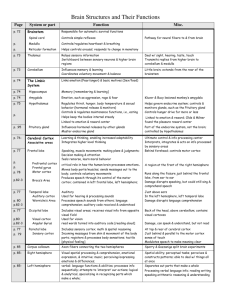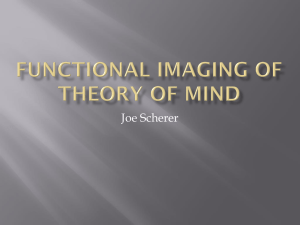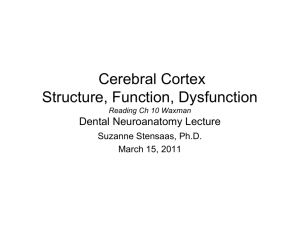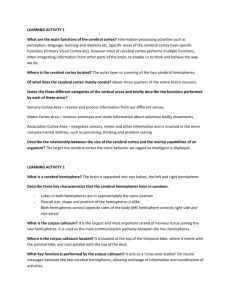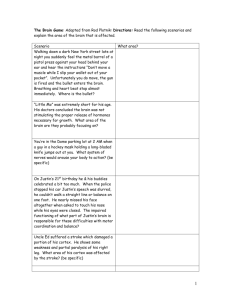brain structure
advertisement
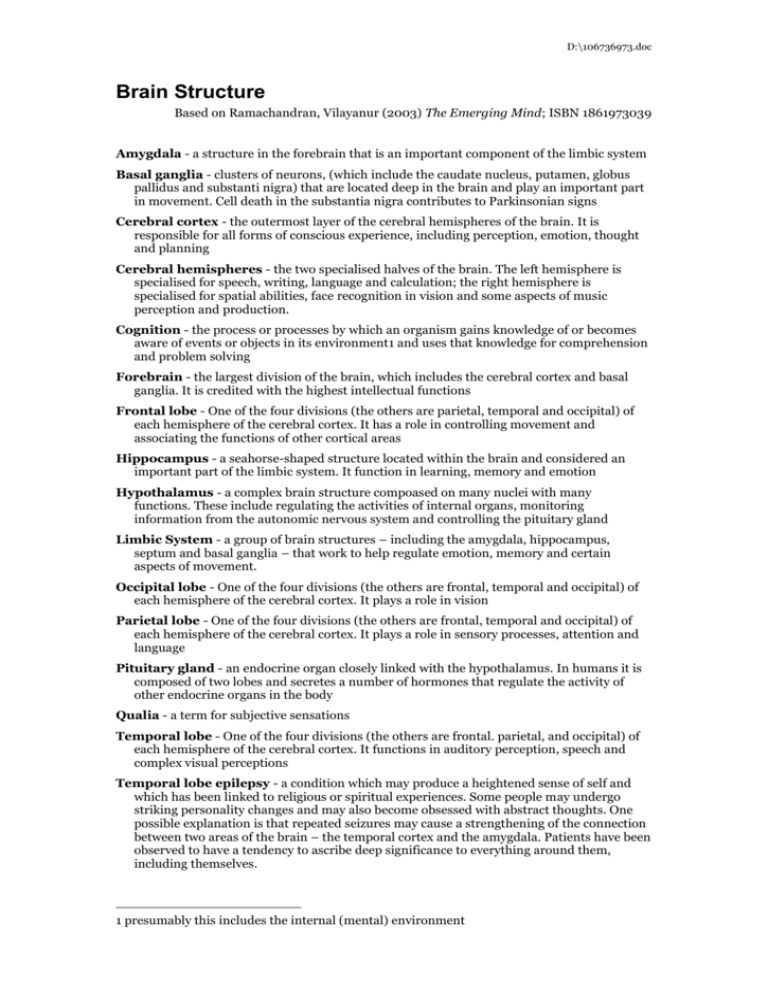
D:\106736973.doc Brain Structure Based on Ramachandran, Vilayanur (2003) The Emerging Mind; ISBN 1861973039 Amygdala - a structure in the forebrain that is an important component of the limbic system Basal ganglia - clusters of neurons, (which include the caudate nucleus, putamen, globus pallidus and substanti nigra) that are located deep in the brain and play an important part in movement. Cell death in the substantia nigra contributes to Parkinsonian signs Cerebral cortex - the outermost layer of the cerebral hemispheres of the brain. It is responsible for all forms of conscious experience, including perception, emotion, thought and planning Cerebral hemispheres - the two specialised halves of the brain. The left hemisphere is specialised for speech, writing, language and calculation; the right hemisphere is specialised for spatial abilities, face recognition in vision and some aspects of music perception and production. Cognition - the process or processes by which an organism gains knowledge of or becomes aware of events or objects in its environment1 and uses that knowledge for comprehension and problem solving Forebrain - the largest division of the brain, which includes the cerebral cortex and basal ganglia. It is credited with the highest intellectual functions Frontal lobe - One of the four divisions (the others are parietal, temporal and occipital) of each hemisphere of the cerebral cortex. It has a role in controlling movement and associating the functions of other cortical areas Hippocampus - a seahorse-shaped structure located within the brain and considered an important part of the limbic system. It function in learning, memory and emotion Hypothalamus - a complex brain structure compoased on many nuclei with many functions. These include regulating the activities of internal organs, monitoring information from the autonomic nervous system and controlling the pituitary gland Limbic System - a group of brain structures – including the amygdala, hippocampus, septum and basal ganglia – that work to help regulate emotion, memory and certain aspects of movement. Occipital lobe - One of the four divisions (the others are frontal, temporal and occipital) of each hemisphere of the cerebral cortex. It plays a role in vision Parietal lobe - One of the four divisions (the others are frontal, temporal and occipital) of each hemisphere of the cerebral cortex. It plays a role in sensory processes, attention and language Pituitary gland - an endocrine organ closely linked with the hypothalamus. In humans it is composed of two lobes and secretes a number of hormones that regulate the activity of other endocrine organs in the body Qualia - a term for subjective sensations Temporal lobe - One of the four divisions (the others are frontal. parietal, and occipital) of each hemisphere of the cerebral cortex. It functions in auditory perception, speech and complex visual perceptions Temporal lobe epilepsy - a condition which may produce a heightened sense of self and which has been linked to religious or spiritual experiences. Some people may undergo striking personality changes and may also become obsessed with abstract thoughts. One possible explanation is that repeated seizures may cause a strengthening of the connection between two areas of the brain – the temporal cortex and the amygdala. Patients have been observed to have a tendency to ascribe deep significance to everything around them, including themselves. 1 presumably this includes the internal (mental) environment
